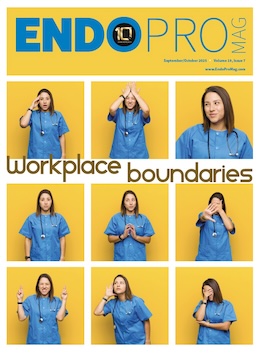The journal Clinical Gastroenterology and Hepatology has shared a new study that explores whether artificial intelligence may help with endoscopic scoring of Crohn’s disease (CD).
Endoscopic scoring of CD is challenging because mucosal disease is patchy with highly variable morphology, size, and severity. Computer vision may help quantify disease activity with similar performance as standard instruments like the Simple Endoscopic Score for Crohn’s Disease (SES-CD), according to the study abstract.
Colonoscopy videos from the STARDUST and SEAVUE phase 3 clinical trials underwent post-hoc computer vision endoscopic (CVE) assessment to quantify CD mucosal ulceration and injury. A segmentation model was trained on hand annotations of images performed by two gastroenterologists, predicting ulcer area, severity, and relative size.
Predicted ulceration and general mucosal injury were then spatially mapped to the ileum and colon to quantify CD burden. CVE ulceration and general injury values were compared to the SES-CD in terms of disease quantification, localization, and agreement with end-of-study clinical remission.
Ulcer semantic segmentation models matched the performance of gastroenterologist annotators, with neither performing better on qualitative review of disagreements. CVE measures were highly correlated with SES-CD scores, though there was expected poor correlation with the degree of stenosis.
The conclusion was that CVE “provides a means for automated ulceration and mucosal injury quantitation that shows conceptual agreement with SES-CD and offers new capabilities to improve the granularity and personalization of endoscopic disease assessment in CD.”
To read more of the study, click here.







